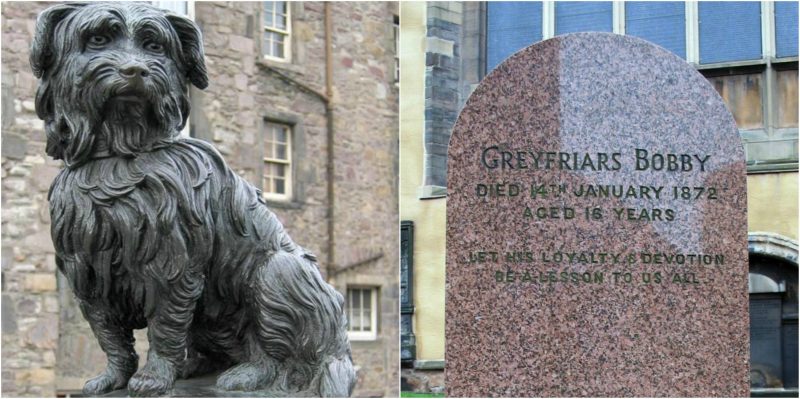This story begins with a gardener called John Gray, who arrived in Edinburgh, Scotland in 1850 together with his family. He wanted to find a better job and provide for his children. After unsuccessfully seeking work as a gardener, he decided to join the Edinburgh Police Force as a night watchman.
Soon after he started his shifts in the cobbled streets of the city, John found himself a partner to keep him company during the long nights: a tiny Skye Terrier called Bobby. He was hardly a watchdog, but he was surely a faithful and cheerful companion. The two of them became friends and were a common sight around the city.
After spending several years on the job, patrolling during the cold nights of Edinburgh, John started to get sick. According to the records, he was treated by the Police Surgeon for tuberculosis. The widely accepted version of events says that after John Gray died on the 15th February 1858.
He was buried in Greyfriars Kirkyard, the graveyard surrounding Greyfriars Kirk in the Old Town of Edinburgh. Bobby lost his friend, but he never let go of him. The dog spent the rest of his days by sitting and guarding his master’s grave.
Soon Bobby became very famous across the city. People gathered almost every day at the entrance of the Kirkyard during the firing of one o’clock gun at 1 pm to see Bobby. Supposedly, this was the time when the dog was leaving the grave for his midday meal. According to the story, he was visiting a coffee house called “Traill’s Coffee House,” a place he often visited with his deceased master. Mr. Trail, the owner of the coffee house, continued to feed Bobby.
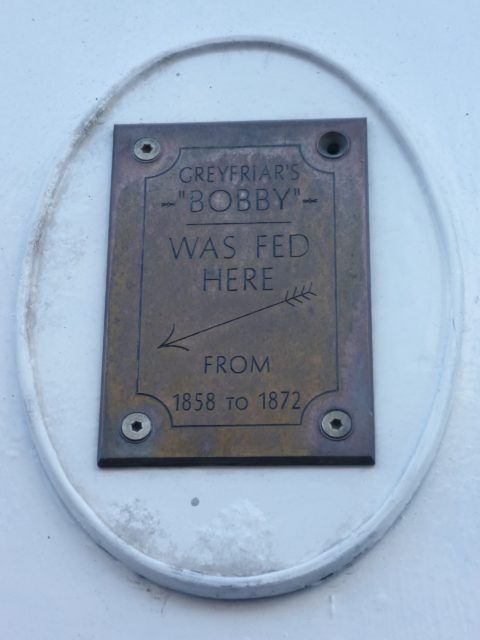
In 1867, the City of Edinburgh passed a new law that required all dogs to be licensed. If the dogs weren’t registered in the city, they would be caught and killed. Sir William Chambers, The Lord Provost of Edinburgh during that time, decided to pay Bobby’s license to protect him. Bobby was given a nice collar with a brass inscription that said: “Greyfriars Bobby from the Lord Provost 1867 licensed.” The collar is now at the Museum of Edinburgh.
According to some sources, Bobby kept faithfully watching his master’s grave for 14 years, up until his death in 1872. During this time, the people of Edinburgh simply adored Bobby and took good care of him.
The legitimacy of the story about Greyfriars Bobby has been questioned many times. There are even three books written about this subject: Greyfriars Bobby: The Real Story at Last, by Forbes Macgregor; Greyfriars Bobby: The Most Faithful Dog in the World, by Jan Bondeson; and Greyfriars Bobby The Most Famous Dog in Scotland, by Richard Brassey.
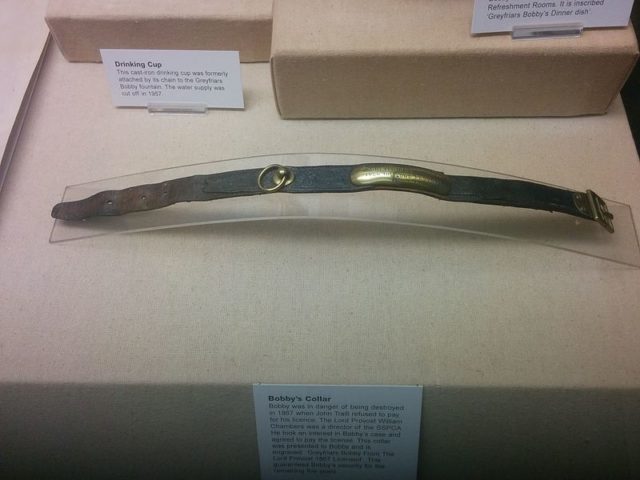
Part of the problem are statements written in two opposing letters to The Scotsman newspaper on 8 February 1889. Both of the people that wrote the letters claimed that they knew the dog, but they offered two different views on the events. Another problem is that the identity of John Gray remains unclear; in 1871, Mr. Trail had spoken about a farmer called John Gray, yet there is another man from the same time who bears the same name.
In his book about Bobby, Jan Bondeson questions the loyalty of the dog by stating that in 19th-century Europe there are over 60 documented accounts of graveyard or cemetery dogs. He says that those were stray dogs which were fed by visitors and curators to the point where they made the graveyards their home.
Bondeson also thinks that this story was an organized hoax by which the local community gained commercial benefit. He also speculates that in 1867 the original Bobby died and was replaced with a younger dog, explaining Bobby’s supposed longevity.
Besides the controversy about the truthfulness of the story, Greyfriars Bobby is still respected and considered to be a notable character from Edinburgh’s past. The Edinburgh City Council even awarded him with the keys to the city.
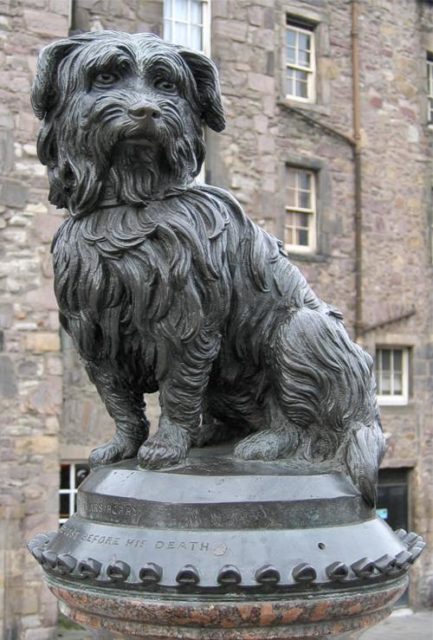
Baroness Angela Georgina Burdett-Coutts, a famous English philanthropist and the president of the Ladies Committee of the RSPCA, was deeply moved by the story of Greyfriars Bobby. Eventually, the Baroness asked the City Council of Edinburgh for permission to erect a granite fountain in honor of Bobby.
The monument, which was created by William Brodie in 1872, was unveiled at the junction of George IV Bridge and Candlemaker Row (opposite the entrance to the churchyard) on 15 November 1873. The Greyfriars Bobby Fountain has a lifesize statue of the famous hound. Originally built as a drinking fountain, it had an upper fountain for people and a lower fountain for dogs.
This monument is Edinburgh’s smallest listed building. The fountain had the water supply cut off around 1975 because of health scares. The monument was fully restored under the supervision of Edinburgh District Council in 1985.
On 13 May 1981, the Dog Aid Society of Scotland erected a red granite stone on Bobby’s grave. People often visit his grave and leave sticks (for Bobby to fetch) and occasionally dog toys or flowers. Bobby’s headstone reads “Greyfriars Bobby – died 14th January 1872 – aged 16 years – Let his loyalty and devotion be a lesson to us all.”
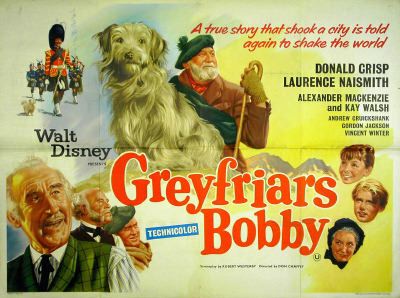
Bobby’s story has been the inspiration for a novel and two films: the novel Greyfriars Bobby (1912) by Eleanor Atkinson and the films Greyfriars Bobby (1961) and The Adventures of Greyfriars Bobby (2006).
